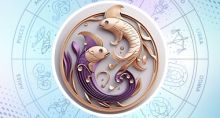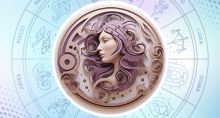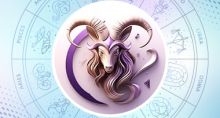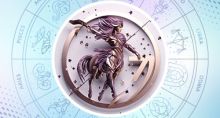Maha Navami: Significance & Auspicious Time
Maha Navami is the 9th day of the Navratri festival that honors Goddess Durga and her 9 forms. It is the day before Vijaya Dashami, which marks the end of Navratri.
Maha Navami 2023 falls on October 23, Monday.
Navami Tithi timings: October 22, 7:59 pm - October 23, 5:45 pm
Maha Navami falls on the 9th day of the Shukla paksha in Ashwina month (Sept–Oct).
Significance of Maha Navami
As per Hindu mythology, Goddess Durga waged battle against Mahishasura, the buffalo demon, for nine days. Durga took the form of Siddhidhatri to kill the demon. Hence, she is also known as Mahishasura Mardhini.
On this day, people perform Kanjak Pooja and invite young girls below the age of 10 and offer them food and gifts. They also seek their blessings, as these girls represent the Goddess.
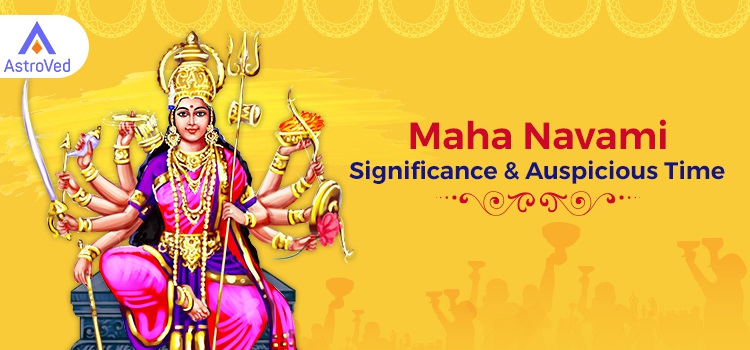
Goddess Siddhidhatri
In popular iconography, the Goddess has 4 hands that hold a discus, conch shell, mace, and lotus. She sits on a lotus in full bloom or a lion. She has many supernatural powers, including Ashtasiddhis, that she gave to the Trimurti (Brahma, Vishnu, and Shiva) to help them fulfill their responsibilities. Gods, gandharvas, yakshas, and asuras constantly surround her.
Siddhi denotes ‘supernatural power,’ and dhatri means ‘giver’. The Goddess has the power to bestow mystical powers. One-half of Shiva is supposedly Siddhidhatri. So, this form is also called Ardhanarishvara. Shiva obtained siddhis with her help.
When the universe was in total darkness, the ray of divine light, which is always existing and illuminating, manifested as Goddess Mahashakti. This form of the Goddess is also called Siddhidhatri. The Supreme Goddess then created the Trimurti - Brahma, Vishnu, and Shiva. She advised them to contemplate so that they would understand their duties to the world. The Trimurti sat on the river bank and began their penance.
The Goddess then appeared before them as Siddhidhatri and bestowed wives to them - Lakshmi, Saraswati, and Parvati. She also assigned the roles of the Trimurti - Creator, Preserver, and Destroyer; and provided them with divine powers to enable them to perform their duties.
The 8 mystical powers are Anima – reducing one’s size, Mahima – enlarging one’s size, Garima – becoming heavy, Laghima – becoming light or weightless, Prapti – being omnipresent, Prakambya – getting whatever one desires, Ishitva – possessing absolute control or lordship, and Vashitva –the power to subjugate everything and everyone.
She also granted them 9 more treasures and 10 other supernatural powers. After this, the Trimurti created man, woman, devas and devis, daityas and asuras, yakshas, apsaras, etc. In this manner, the 14 worlds were created by the power of Sidhdhidhatri.
Maha Navami Pooja and Rituals
Pink-colored clothes and flowers are used to adorn the Goddess. This form of Durga is the supreme form of Mahashakti. Some devotees also perform Chandi Yagna or Navami Yagna toward the end of Maha Navami.
In South India, Durga is worshipped on this day as Saraswati, the Goddess of knowledge and wisdom. Devotees perform Ayudha Pooja by decorating and worshipping tools, machinery, vehicles, musical instruments, books, and equipment of all kinds, along with the Goddess. This Pooja is done before starting any new work on the next day, which is Vijaya Dashami. Also, in many places, children start going to school on this day.
In North and East India, devotees perform Kanya Pujan. In this ritual, nine young virgin girls are honored as nine forms of Goddess Durga. People wash their feet and apply kumkum and sandalwood paste on them. They also give them new clothes and worship them with Mantras and incense sticks. A special feast is prepared for them, and they are also offered gifts.
Maha Navami is the third day of Durga Pooja in eastern India. Devotees have a holy bath and perform Shodhasopachar Pooja. On this day, Durga is worshipped as Mahishasuramardini, as it was on this day that the demon was killed.
The Maha Navami Pooja begins with dhyan and avahana for invoking Durga. The other rituals include Asana or the offering of five flowers to the Goddess, Padya Prakshalana or offering water to wash her feet, Arghya Samarpan (offering scented water while chanting Mantra), Achamana Samarpan (offering water to the Goddess for snana/bath), Abhushana Samarpan or offering new clothes, Chandan Samarpan, Roli Samarpan, Kajjalarpan, Saubhagya Sutra, offering scent in Sugandhita Dravya, Haridra Samarpan, Akshata Samarpan, Pushpanjali, Bilvapatra, Dhoop Samarpan, and Deep samarpan. The Pooja ends with Kshamapan, or seeking pardon from the Goddess for mistakes and transgressions.
Devotees perform Navami Homa toward the end of Navami Pooja. They believe that Pooja done on this day is equivalent to Pooja done on all 9 days of the Navratri festival.
The ancient tradition of Navami Bali, or the sacrifice of animals, takes place in some areas even now.
The Batthukamma festival takes place on Navami in some areas of Andhra Pradesh,. The name comes from a beautiful flower. Women perform the Pooja by arranging 7 layers of flowers in a conical shape. The flowers are offerings to Goddess Gauri—a form of Durga. The festival celebrates womanhood. Women deck up in new clothes and jewels on this day.
Other Poojas on this day are Suvasini Pooja and Dampati Pooja.
On this day, the royal sword is worshipped in Mysore, and it is taken out in processions on caparisoned elephants and camels.










